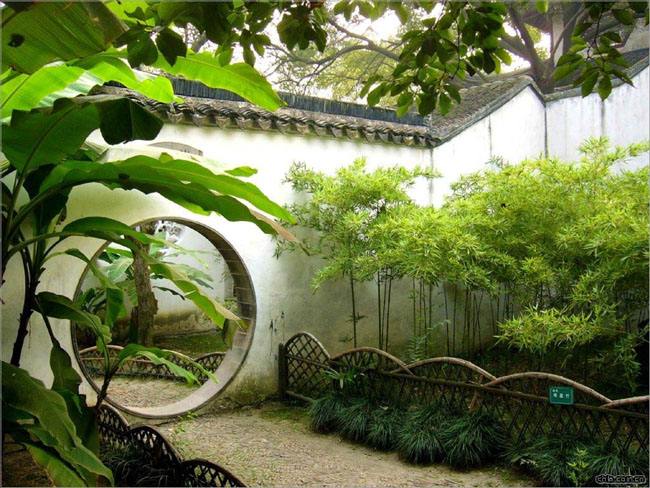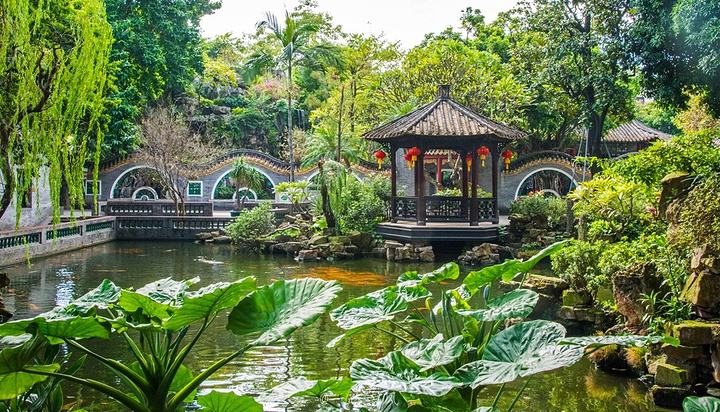FEATURES OF CHINESE GARDENS
4 min readAlthough there’s a great variety in Chinese gardens, and each garden has its owntres particular features, there are some common features. The pursuit of poetic beauty and an artistic ideal closely connects Chinese gardens to poetry and painting etic meaningan attempt to recreate poem or painting in bothin pursuit of poe garden setting. Such characteristics find their expression in the design of the mountains are very and each gan has own thematic content. Most gardens are taken from well-known poems and have layouts based on landscape paintings. In general, gardens aim for the harmonization of space and natural scenes according to artistic principles.

Gardens take advantage of scenes to express the designer’s emotion and arouse the visitor’s associations and imaginati. An artistic expression of emotion is a basic theme in art and Chinese gardens are no exception. Because gardens are a recreation of nature in an artificial setting, gathe process of creating a garden requires imagination and innovation. First, waterways and mountains are created using stones and ditches, and their mutually dependent pairing brings out a striking effect. Second choosing an auspicious name is an important part of creating associations with the garden and nature. Names are inscribed on stone tablets, gatepost couplets and door boards. These two measures help create a picture for the visitor and set the mood for the garden.
Creating a sense of space within a limited area is important, especially in small private gardens. In order to create more scenes, designers construct mountains, and waterways, plant trees and flowers and breed fish. Fixed scenes are given varied views and perspectives by using contrast, offsetting the point of view and by using winding paths.

These measures give a new view at every point throughout the small garden, thus creating a larger sense of spatial freedom. Some methods include making the river banks curved witirregular stones, planting flowers and trees according to different seasons, varying the length of corridors, and using decorative windows and gates. A careful observer will notice Suzhou gardens that if there’s a window facing a white wall, there will also be rocks or vegetation within the frame. The design is meant to create a sense of exploratior the an scenes are partly hidden and offer different impressions from different angles.
Gardens borrow and use the scenery of the nearby surroundings. A Chinese garden emphasizes the arrangement of different scenes inside and outside the garden in proper proportions. For example, in the Geavilion. From this pavilion the scenery of the Slender in Yangzhou, there’s the Summer Mountain, which is topped with a paenie West Lake(shou xihu) can be seen in the distance. In Wuxi, the Jichang Garden (jichang yuan) borrows the pagoda in Xi Shan as backdrop to set off the scenes in the garden.
The design and landscaping of Chinese gardens has evolved into an independent technique Mountain Scenery Mountains are the foremost feature in forming garden scenery. During the reign of Emperor Wudi of the Han dynasty laborers shaped small island from soil they dug out while repairing a pond. This island was an early example of artificial mountains. Later garden designers, instead of duplicating the size of mountains, stressed the important details so artificial mountains closely resembled their real counterparts From the Tang and Song dynasties, and with the development of landscape painting, landscape gardeners began paying greater attention to construction techniques.

Water Scenery Waterways are one of the most important scenic features of a garden. Waterscapes in a garden can be static lakes or dynamic waterfalls. There are three ways to construct artificial water scenery.
Coverings Garden designers often cover the banks of a waterway with a thick growth of grass and construct buildings on the shore. Architectural constructions are usually erected above the water in order to create a sense of flowing water from the base of the structure. Plant:and grass along the water will give it an appearance of tranquility and stillness.
Partitions Stone bridges, corridors or large stones placed in the water allow visitors to cross the waterway and give the space above the flat water a compartmentalized, layered effect.
Decorations If the area that water occupies is very small, winding path along the shore made with rregularly shaped stones or planted vegetation helps to create a spatially open feeling.
Fish and water plants in the water also add to the scenic beauty. with carted stome A bridge with an elegantly carved stone railing.
In order to make the water and mountains look natural, it’s necessary to plant Plants and flowers are often chosen according to their aesthetic shapes,colors, and fragrance. Landscape gardeners often prefer red maples, green bamboo, colorful roses, and white magnolias, all of which serve as a visual and olfactory ornament in al seasons. The symbolic meaning of each plant is also carefully considered. For example, bamboo is the symbol of uprightness, pine is a symbol of strength and longevity, the lotus associated with purity and the peony with wealth and rank Designers use these plants as another method to get across their artistic intention. consi Classical Chinese gardens attach considerable importance to animals within the garden.
Animals such as goldfishes, mandarin ducks, white cranes, and parrots provide amusement as well as serve as symbols of longevity. Animals allow visitors to feel as if they’re in the midst of a truly natural environment.








